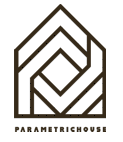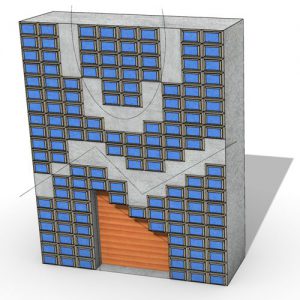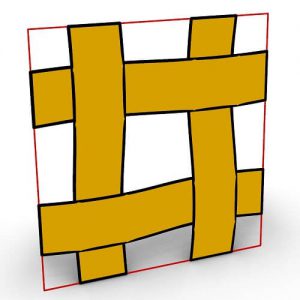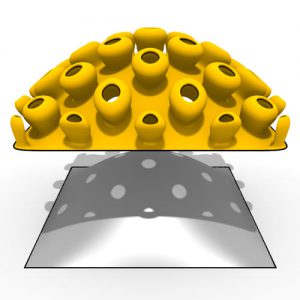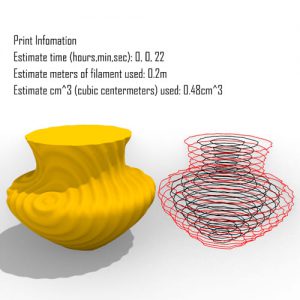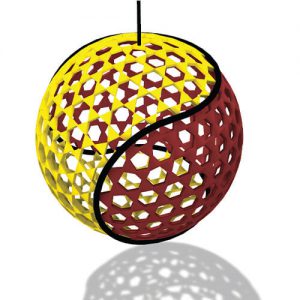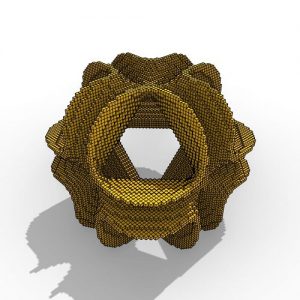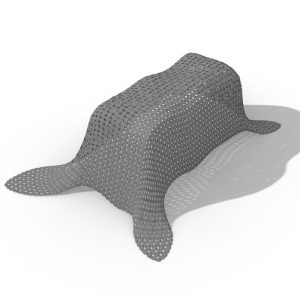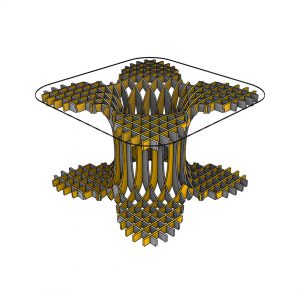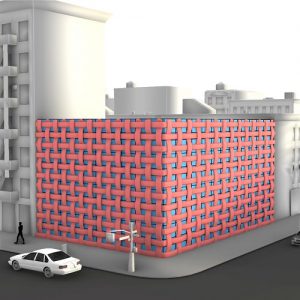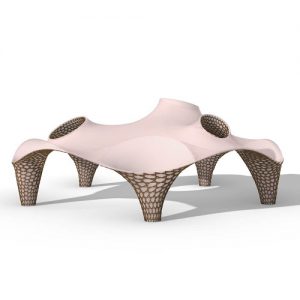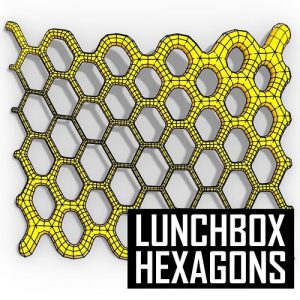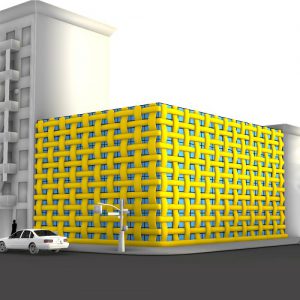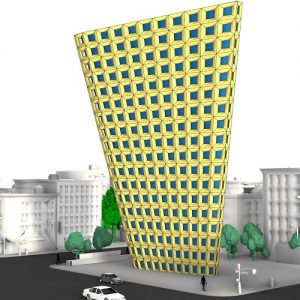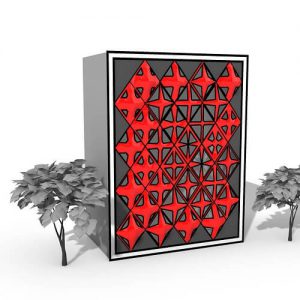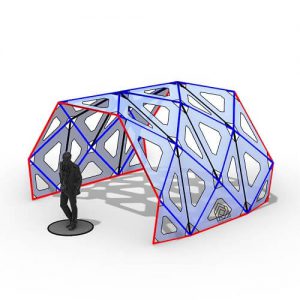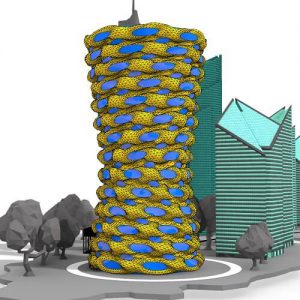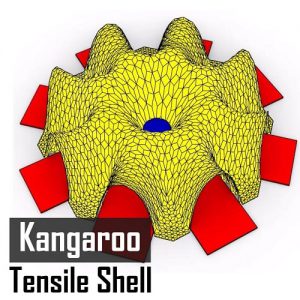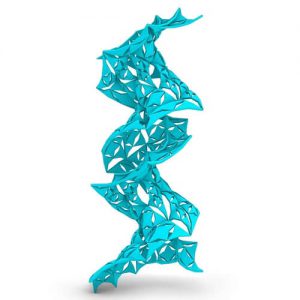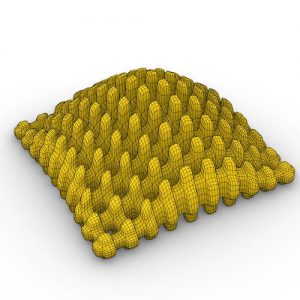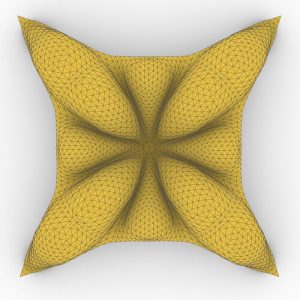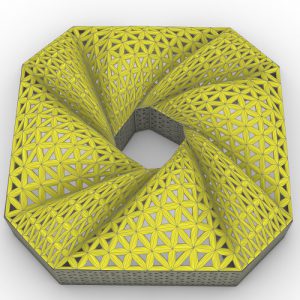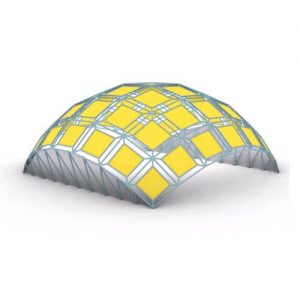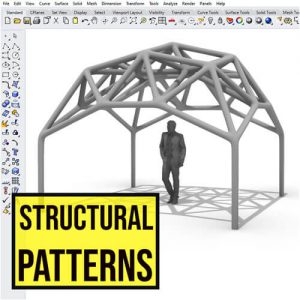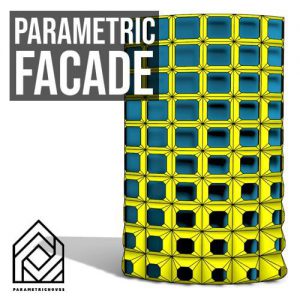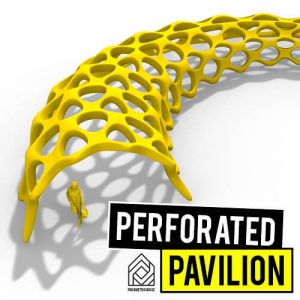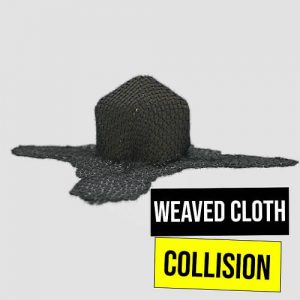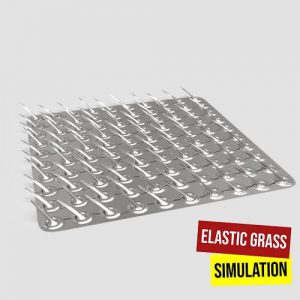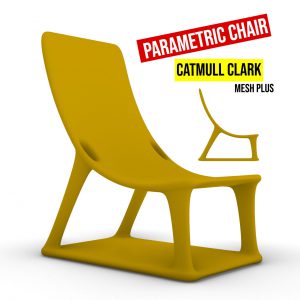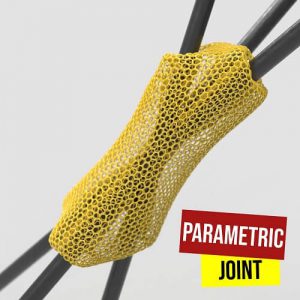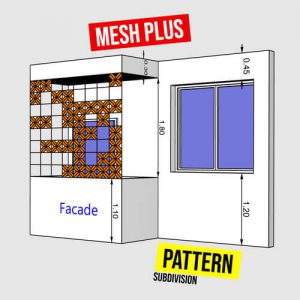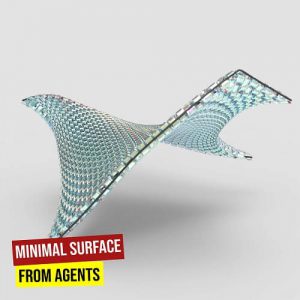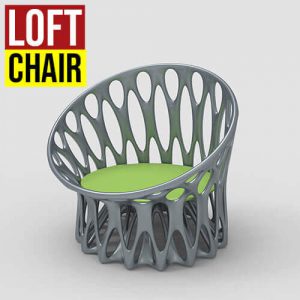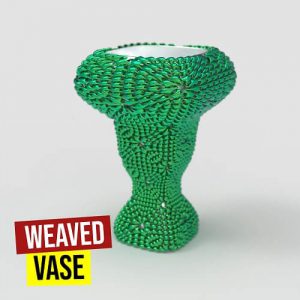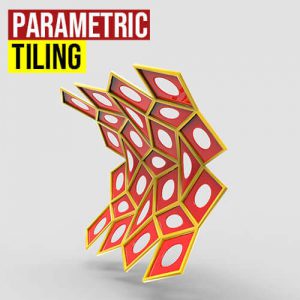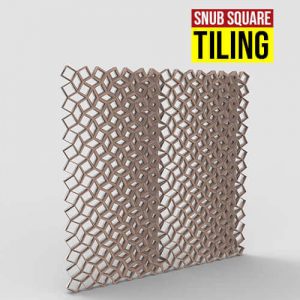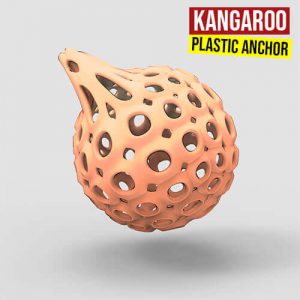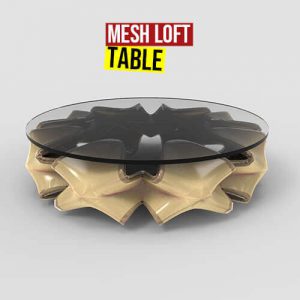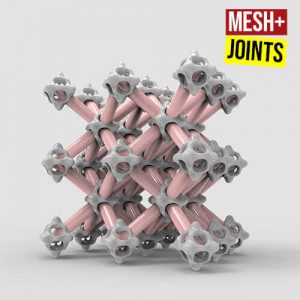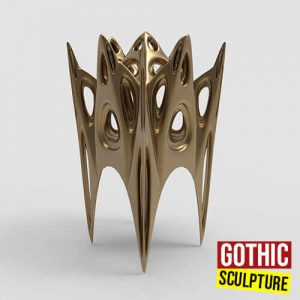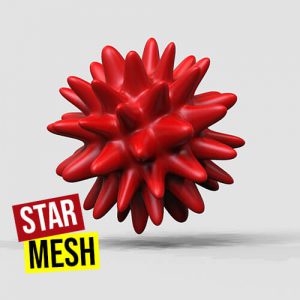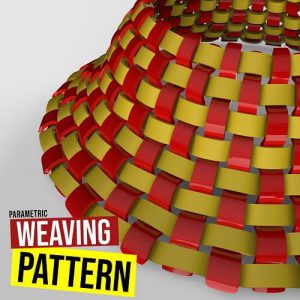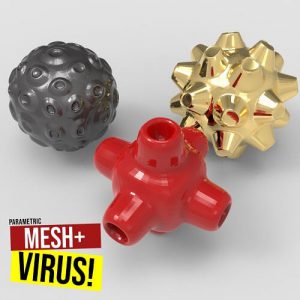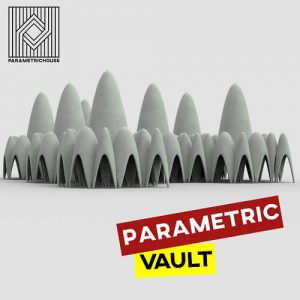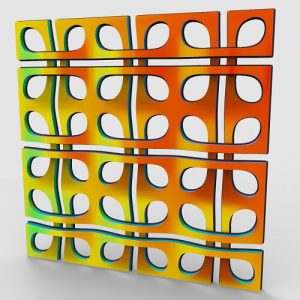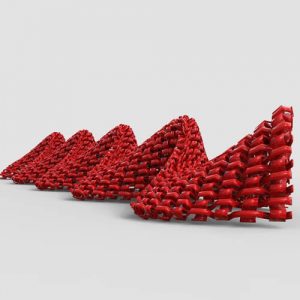In this Grasshopper example file, you can design a parametric facade using curve attractors and a boundary curve defining the entrance.
In this grasshopper example file you can convert a rectangle to a weave pattern easily by defining the division , offset , deformation and mesh colour.
In this kangaroo example file, You can design a parametric tensile structure in a boundary using the Mesh+ and Weaverbird plugin.
In this example file, You can use the mesh+ & Weaverbird plugin to model a smooth mesh with openings.
In this grasshopper Mesh+ example file, you can design a parametric column by scaling a series of circles.
In this grasshopper example file, you can use the Droid Plugin to Generate G Code for 3D printing a Mesh.
In this Grasshopper Example File, You can model a triangulated lamp shade using the Fennec ,Mesh+ and Kangaroo Plugins.
In this grasshopper example file, you can use the Legolizer plugin to Generate a series of parametric Lego & Voxels.
In this Grasshopper example file, you can simulate a piece of Cloth behaviour in collision with a solid object using the Kangaroo plugin.
In this Grasshopper example file, you can design a waffle table by using the Bowerbird plugin.
In this Grasshopper Example File,You can design a parametric facade inspired by the Ferrum 1 Office Building by Tchoban Voss Architekten
In this Grasshopper Example File,You can model a parametric roof inspired by The Centre Pompidou-Metz by Shigeru Ban .
In this Grasshopper Example File, you can use the Mesh+ plugin combined with Multipipe component to model a Parametric Dome.
In this Grasshopper example file, you can model a parametric hexagonal structure using the Lunchbox plugin combined with multi-pipe and Mesh+.
In this Grasshopper example file you can model a parametric facade inspired by a woven cloth.
In this Grasshopper example file you can model a parametric facade inspired by the Leyweg Municipal Office by Rudy Uytenhaak.
In this Grasshopper example file you can use the Kangaroo plugin combined with the Mesh+ plugin to model a parametric facade.
In this grasshopper example file, you can Create a 2D Diamond grid with the LunchBox Plugin on a Surface and then slide the strips of the pattern with WarpWeft Component of Kangaroo 2 Plugin.
In this example file you can you can design a parametric folding origami covered with Diamond panels using the Parakeet, LunchBox, Crane & Meshplus plugins.
In this Grasshopper example file you can use the Mesh+ plugin combined by Lunchbox and Weaverbird to model a parametric tower.
In this grasshopper example file you can model a parametric shell structure by using the Kangaroo 2 Plugin combined with Mesh + & Ngon.
In this grasshopper example file You can extract the iso-curves of a parametric surface and then convert it to a mesh. Finally you can use the Mesh+ Plug-in to give it some patterns.
In this grasshopper example file You can use the Mesh+ plugin combined with Weaverbird to model a parametric fractal mesh.
In this Grasshopper example file you can use the Kangaroo 2 plugin to create a parametric tensile pattern.
In this grasshopper example file you can model a parametric polygon base tensile structure using the Kangaroo 2 plugin
In this grasshopper example file You can use the Möbius Transformation component from the Kangaroo Physics plugin to transform a mesh plane by using a mobius transformation.
In this grasshopper example file You can design a parametric chair by using the Kangaroo 2 plugin and the Sphere Collide component.
In this grasshopper example file You can use the Lunchbox or Mesh+ plugins to generate a series of parametric patterns on a Nurbs surface.
In this grasshopper example file you can model a series of parametric rings made by the Mesh+ Plugin and change the shape by defining a point attractor.
In this grasshopper example file you can model a parametric facade and control the form by a series of Point attractors. The base pattern is modeled by Mesh+ plugin.
In this grasshopper example file you can simulate the collision between a weaved cloth and an icosahedron using the Kangaroo 2 plugin.
In this Grasshopper example file you can simulate a grass like pattern in a windy situation using Kangaroo 2 plugin .
In this grasshopper example file you can use the Mesh+ plugin and weaverbird to make a bridge between two surfaces and model a parametric chair.
In this grasshopper definition You can model a deformed circular bench using Grasshopper's native components .
In this grasshopper example file you can model a parametric joint using the Cocoon and meshplus plugin.
In this grasshopper example file you can use the mesh+ plugin to model a series of random pattern in a simple facade.
In this grasshopper example file you can use the Culebra plug-in to generate minimal surfaces.
In this grasshopper example file you can create a parametric loft surface and apply a 3D diamond pattern on the surface.
In this grasshopper example file you can model a parametric vase using a weaving pattern and attractor points.
In this grasshopper example file, you can simulate an inflated parametric tire by using the Kangaroo plugin.
In this grasshopper example file you can generate a parametric pattern on a lofted surface by using the Mesh+ plugin.
In this grasshopper example file, you can model a snub square tiling on a mesh surface using the mesh+ plugin.
In this grasshopper example file, you can use kangaroo to simulate a differential growth on a mesh which will result in a maze-like pattern.
In this grasshopper example file, you can deform a mesh by grabbing a point using the kangaroo plugin.
In this grasshopper example file, you can model a parametric necklace by using the criss cross component of mesh+.
In this grasshopper example file you can create a mesh loft and subdivide it by the T+3 subdivision component.
In this grasshopper example file you can model a parametric 3d form by using shortest walk from random generated points and add antisnub component from the mesh+ plugin.
In this grasshopper example file, you can model a 3D network of lines and add joints at their intersections.
In this grasshopper example file you can model a smooth fractal mesh using the Mesh+ plugin combined with weaverbird.
In this grasshopper example file we have used the Kangaroo plugin to deform a mesh and then combine the mesh+ plugin with weaverbird to model the final smooth mesh.
In this grasshopper definition, you can connect a series of meshes together be selecting the bridging faces.
In this grasshopper definition, you can model an organic mesh by using the Mesh+ Plugin and Weaverbird.
In this Grasshopper definition, you can model a weaving pattern on a parametric revolution surface. First, we will extract a portion of the surface and convert it into a mesh. Then we will use the Mesh+ Plugin to model the Pattern.
In this grasshopper definition, you can use the mesh+ Plugin to model a parametric virus-like mesh! finally, a Catmull-Clark subdivision can smooth the final result.
In this grasshopper definition, you can generate a parametric face mask by spliting parts of the face mesh and use pufferfish to give it a symmetric look. Finally, use mesh+ plugin to give it some borders.
In this grasshopper definition by using one of the parakeet's tiling you can generate a vault-like form by using Mesh+ plugin and also Weaverbird to thicken the form.
In this grasshopper exercise file, we have used a plugin to produce a wave-like mesh pattern and then use weaverbird to smooth the final result.
In this grasshopper definition by generating two sets of catenary arches, you can create a parametric shell . Then you can use the mesh+ plugin to produce a weave pattern on the surface.
